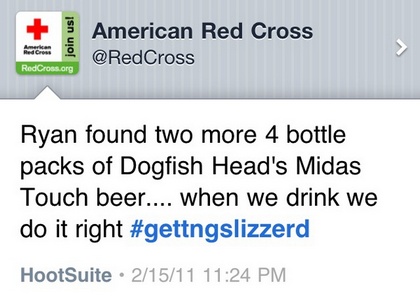Most of the conference presentations are available for download on the JBoye site.
Here are some of the tid-bits I picked up from the various sessions:
- RFPs:
- don't submit checklists of features and functions to vendors. Instead submit a series of use cases telling a "testable" story. This allows vendors to get to know more about how you would use their product, while at the same time enabling them to directly respond to your specific needs.
- Keep the RFP to under 10 pages if possible and 15 as a maximum
- Include information about your organization, project details/scope, project timeline, use cases and vendor selection criteria, technology landscape in use currently, and upcoming projects
- avoid using yes/no in grading minutia in an RFP, instead consider using a scale 1-10, pie chart or street light (red, yellow, green). This tells a greater story of what the vendor offers.
- Start with 8-10 vendors to submit an RFP, narrow down the field to under 4 for a demo and ask them to demonstrate the use cases from the RFP
- Consider throwing a surprise use case into the mix during vendor demo's
- Always call customer references
- One of the biggest problems in selecting a CMS is companies over-spending and over-buying
- buy what is necessary to support your current and mid-term business needs
- Platforms are a good solution for future demands, and accomplishing multiple use cases. Products are cheaper, easier and faster to implement to fix a more narrow need.
- HTML5 has some amazing features that will simplify the coding of websites while simultaneously making them more robust. Some of the features are available today but like many HTML features, is implemented slightly differently in each browser.
- http://www.brandtags.net offers a collective experiment in brand perception where users tag brands with a single word and consumer sentiment boils to the top.
- Google docs can be used to create user friendly forms that can be embedded into intranets and tied to a spreadsheet back-end. Speaking of which, lets see how it works - I posted one at the bottom of this blog!
- Intranets should focus on people and what they need to do. A user task based approach is a better model than building a taxonomy around organizational hierarchy
- The folks at the Smithsonian Institute have big plans for their online presence and are vocal and open about it on Smithsonian Commons.
- The Nature Conservancy has built an impressive example of what can be done with Oracle ECM
- Part of a content management strategy is making sure you have the right content contributors. Volunteers that are "volun-told" often lack the desire to contribute fully. Instead consider nominating users that you feel know enough about the content, are pro-active, are quick-learners, and can get the job done. Always reserve the right to say "thanks, but no thanks" to folks that are "volun-told" to do the job.
- Disclosure of the groups a person has subscribed to is a great way to spread the word on information that might be relevant to others.
- When launching a new social media offering pick champions from throughout your organization and ask them to recruit others. They can help you to plan, tell the story to executives - user testimonial goes a long way, inspire others, peer support, and to engage local teams.
- IKEA has launched an extranet for their employees but rather than refer to user in the typical way, it refers to them as "co-workers". Checkout what they have done at http://www.ico-worker.com/
- The word "you" appears on their homepage 26 times - talk about being "co-worker" centric!
- It is easy to see how they could be voted one of the world's ten best intranets of 2008 by the user-experience research firm Nielsen Norman Group (NNG)
- In one session a particular company discussed the history of their intranet and referred to their use of Sharepoint as their darkest years. When polled by the presenter the audience revealed similar experiences.
- Being an ex-CSC'er I couldn't help but be impressed by the presentation by Claire Flanagan on their C3 employee social media site which runs apart from their IBM WebSphere portal. One idea heard several times in the conference was fail big and fail often, but something tells me that CSC's relatively new platform has a bright future. I'll definitely be doing some research to try to uncover what their underlying platform is...Jive?
- Terminology: Social scares executives, Collaboration is dated, Innovation might be more appealing
- The Johns Hopkins University: Applied Physics Laboratory allows employees to submit suggestions, each year employees are allowed to vote on up to 10, then the winning ideas are acted upon.
- Products worth investigating more: cubetree, remindo, yammer
- Use workflow, ESPECIALLY when it comes to publishing to social media sites. No company is immune
- Make sure you have a good PR team just in case:
- http://redcrosschat.org/2011/02/16/twitter-faux-pas/

No comments:
Post a Comment